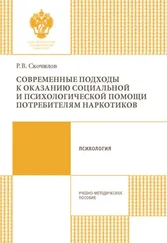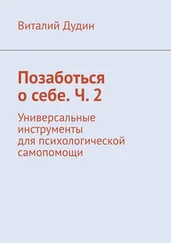Витакер Д.С. - Группы как инструмент психологической помощи
Здесь есть возможность читать онлайн «Витакер Д.С. - Группы как инструмент психологической помощи» весь текст электронной книги совершенно бесплатно (целиком полную версию без сокращений). В некоторых случаях можно слушать аудио, скачать через торрент в формате fb2 и присутствует краткое содержание. Жанр: Старинная литература, на английском языке. Описание произведения, (предисловие) а так же отзывы посетителей доступны на портале библиотеки ЛибКат.
- Название:Группы как инструмент психологической помощи
- Автор:
- Жанр:
- Год:неизвестен
- ISBN:нет данных
- Рейтинг книги:5 / 5. Голосов: 1
-
Избранное:Добавить в избранное
- Отзывы:
-
Ваша оценка:
- 100
- 1
- 2
- 3
- 4
- 5
Группы как инструмент психологической помощи: краткое содержание, описание и аннотация
Предлагаем к чтению аннотацию, описание, краткое содержание или предисловие (зависит от того, что написал сам автор книги «Группы как инструмент психологической помощи»). Если вы не нашли необходимую информацию о книге — напишите в комментариях, мы постараемся отыскать её.
Группы как инструмент психологической помощи — читать онлайн бесплатно полную книгу (весь текст) целиком
Ниже представлен текст книги, разбитый по страницам. Система сохранения места последней прочитанной страницы, позволяет с удобством читать онлайн бесплатно книгу «Группы как инструмент психологической помощи», без необходимости каждый раз заново искать на чём Вы остановились. Поставьте закладку, и сможете в любой момент перейти на страницу, на которой закончили чтение.
Интервал:
Закладка:
McGee, T.F., Schuman, N.B. and Racusen, F.R. (1972), Termination in group psychotherapy', American Journal of Psychotherapy, vol. 26, pp. 521—32.
Melnick, J. and Woods, M. (1976), 'Analysis of group composition research and theory for psychotherapeutic and growth-oriented groups', Journal of Applied Behavioral Science, vol. 12, pp. 493—512.
Menzies, I.E.P. (1970), The Functioning of Social Systems as a Defence against Anxiety, Centre for Applied Social Research, London, Tavistock Institute of Human Relations.
Mintz, E.E. (1965), 'Male-female co-therapists: some values and some problems', International Journal of Group Psychotherapy, vol. 19, pp. 244—55.
Mullan, H. and Rosenbaum, M. (1978), Group Psychotherapy: Theory and Practice, (2nd edn), New York, Free Press.
Napier, R.W. and Gershenfeld, M.K. (1973), Groups: Theory and Experience, Boston, Houghton Mifflin.
Neighbor, J.E., Beach, M., Brown, D.T., Kevin, D. and Visher, J.S. (1958), 'An approach to the selection of patients for group psychotherapy', Mental Hygiene, vol. 42, pp. 243-54.
Parkes, Colin Murray (1972), Bereavement: Studies of Grief in Adult Life, New York, International Universities Press.
Parloff, M.B. and Dies, R.R. (1977), 'Group psychotherapy outcome research 1966—1975', International Journal of Group Psychotherapy, vol. 27, pp. 281—320.
Parloff, M.B. and Dies, R.R. (1978), 'Group therapy outcome instrument: guidelines for 266
conducting research', Small Group Behaviour, vol. 9, pp. 243—85.
Pattison, E.M. (1966), 'Evaluation of group psychotherapy', Current Psychiatric Therapies, vol. 6, pp. 211—17.
Peters, C.B. and Grunebaum, H. (1977), 'It could be worse: effective group psychotherapy with the help-rejecting complainer', International Journal of Group Psychotherapy, vol. 27, pp. 471-80.
Peters, L.N. and Beck, A.P. (1982), 'Identifying emergent leaders in psychotherapy groups', Group, vol. 6, pp. 35—40.
Pfeiffer, J.W. and Heslin, R. (1973), Instrumentation in Human Relations Training, Iowa City, University Associates.
Pfeiffer, J.W. and Jones, J.E. (1972), The 1972 Annual Handbook for Group Facilities (и
последующие ежегодные справочники) Iowa City, University Associates.
Pines, M. (1978), The contributions of S.H. Foulkes to Group Analytic Psychotherapy', in L.R. Wolberg, M.A. Aronson and A.R. Wolbnerg, Group Therapy 1975, An Overview, New York, Stratton Intercontinental Medical Book Corp. .
Psathas, G. (1967), 'Overview of process studies in group psychotherapy', International Journal of Group Psychotherapy, vol. 17, pp. 225—35.
426
Rabin, H.M. (1970), 'Preparing patients for group psychotherapy', International Journal of Group Psychotherapy, vol. 20, pp. 135—45.
Rabin, H.M. and Rosenbaum, M. (eds) (1976), How to Begin a Psychotherapy Group: Six Approaches, London, Gordon & Breach.
Redl, F. (1942), 'Group emotion and leadership', Psychiatry, vol. 5, pp. 573— 96, Повторно напечатано в расширенном виде в: F. Redl, When We Deal with Children: Selected Writings, New York, Free Press, 1966.
Redl, F. (1956), The phenomenon of contagion and "shock effect"', in K. Eissler (ed.), Searchlight on Delinquency, New York, International Universities Press. Повторно
напечатано в пересмотренном варианте в: F. Redl, When We Deal with Children: Selected Writings, New York, Free Press, 1966.
Redl, F. (1966), 'Just what am I supposed to observe?', in F. Redl, When We Deal with Children: Selected Writings, New York, Free Press, 1966, pp. 333—37.
Redl, F. (1966), 'What is there to "see" about a group?', in F. Redl, When We Deal with Children: Selected Writings, New York, Free Press, 1966, pp. 338—45.
Rickard, H.C. (1962), 'Selected group psychotherapy evaluation studies', Journal of General Psychology, vol. 67, pp. 35—50.
Rohrbaugh, M. and Bartels, B. (1975), '"Participants" perception of curative factors in therapy and growth groups" Small Group Behaviour, vol. 4, pp. 430—56.
Rosensweig, S.P. and Folman, R. (1974), 'Patient and therapist variables affecting premature termination in group psychotherapy', Psychotherapy, vol. 11, pp. 76—80.
Sacks, J.M. (1976), The psychodrama group', in H.M. Rabin and M. Rosenbaum (eds), How to Begin a Psychotherapy Group: Six Approaches, London, Gordon & Breach.
Saravey, S.M. (1978), 'A psychoanalytic theory of group development', International Journal of Group Psychotherapy, vol. 28, pp. 481—507.
Schamess, G. (1976), 'Group treatment modalities for latency-age children', International Journal of Group Psychotherapy, vol. 26, pp. 455—76.
Scheidlinger, S. (1982), 'Presidential address: on scapegoating in group psychotherapy', International Journal of Group Psychotherapy, vol. 32, pp. 131—43.
Scott, E.M. (1976), "The alcoholic group: formation and beginnings', in H.M. Rabin and M. Rosenbaum (eds), How to Begin a Psychotherapy Group: Six Approaches, London, Gordon & Breach.
Shaffer, J.V.P. and Galinsky, M.D. (eds) (1974), Models of Group Therapy and Sensitivity Training, Englewood Cliffs, New Jersey, Prentice-Hall.
267
Sharp, M. (1982), 'Getting ready for Part ПГ, Community Care, June 1982 pp 14-15.
Sherif, M. and Sherif, C.W. (1973), 'Acceptable and unacceptable behaviour defined by group norms', chapter 16 in M. Argyle (ed.), Social Encounters, Penguin.
Slavson, S.R. (1955), 'Criteria for selection and rejection of patients for various kinds of group therapy', International Journal of Group Psychotherapy, vol. 5, pp. 3—30.
Stock, D. (1962), 'Interpersonal concerns during the early sessions of therapy groups', International Journal of Group Psychotherapy, vol. 12, pp. 14—26.
Stock, D., Whitman, R.M. and Lieberman, M.A. (1958), The deviant member in therapy groups', Human Relations, vol. 11, pp. 341—72.
Stone, A.R., Parloff, M.B. and Frank, T.B. (1954), The use of "diagnostic" groups in a group therapy program', International Journal of Group Psychotherapy vol 4 pp. 274-84.
Tuckman, B.W. (1965), 'Developmental sequence on small groups', Psychological Bulletin, vol. 63, pp. 384—99.
Vintner, R.D. (1974), 'Program activities: an analysis of their effects on participant behavior', chapter 13 in P. Glasser, R. Sarri and R. Vintner, (eds), Individual Change through Small Groups, New York, Free Press and London, Collier Macmillan.
427
I
Weigel, R.G. and Corazzini, J.G. (1978), 'Small group research: suggestions for solving common methodological and design problems', Small Group Behaviour, vol. 9, pp. 193-220.
Weiner, M.F. (1973), 'Termination of group psychotherapy', Group Process, vol.5, pp.
85-96.
Whitaker, D.S. (1965), The process by which change occurs and the role of insight', Acta Psychotherapeutica, vol. 13, pp. 126—41.
Whitaker, D.S. (1976), 'A group centered approach', in H.M. Rabin and M. Rosen-baum (eds), How to Begin a Psychotherapy Group: Six Approaches, London, Gordon & Breach.
Whitaker, D.S. (1982), 'A nuclear and group focal conflict model for integrating individual and group level phenomena in psychotherapy groups', in M. Pines and L. Rafaelsen (eds), The Individual and the Group: Boundaries and Interrelations. Vol. I: Theory, New York, Plenum Press, pp. 321—38.
Читать дальшеИнтервал:
Закладка:
Похожие книги на «Группы как инструмент психологической помощи»
Представляем Вашему вниманию похожие книги на «Группы как инструмент психологической помощи» списком для выбора. Мы отобрали схожую по названию и смыслу литературу в надежде предоставить читателям больше вариантов отыскать новые, интересные, ещё непрочитанные произведения.
Обсуждение, отзывы о книге «Группы как инструмент психологической помощи» и просто собственные мнения читателей. Оставьте ваши комментарии, напишите, что Вы думаете о произведении, его смысле или главных героях. Укажите что конкретно понравилось, а что нет, и почему Вы так считаете.












